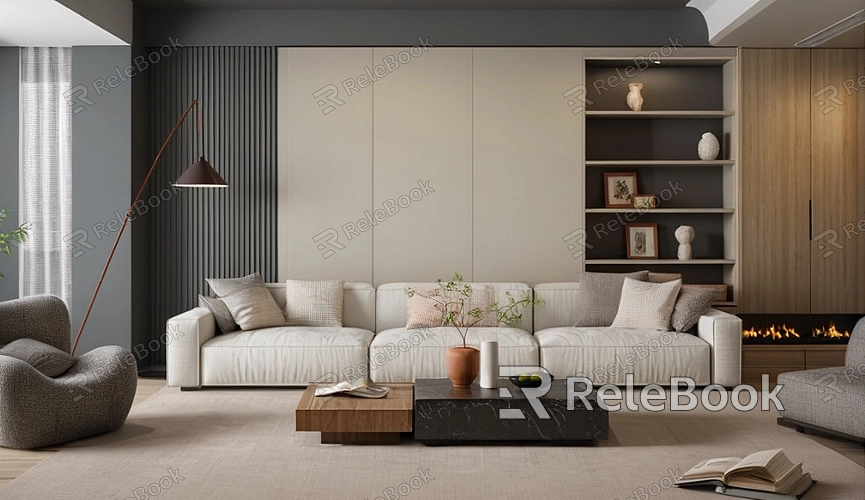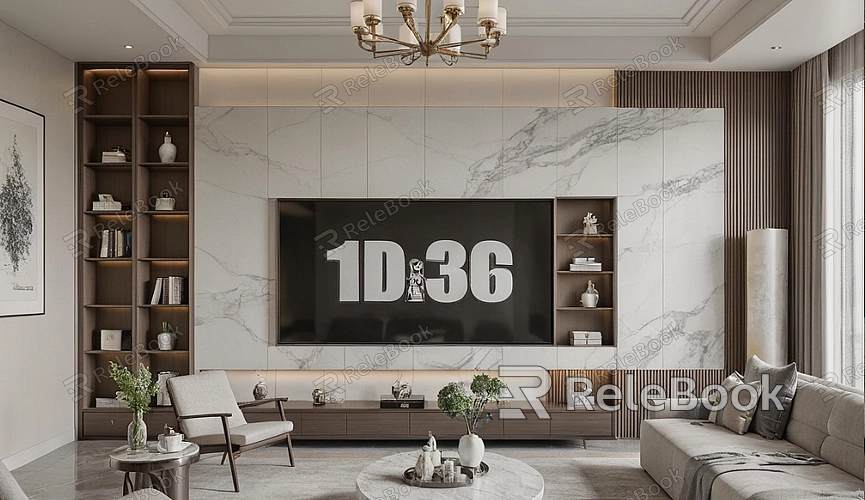Which 3D Model Format is Best?
With the advancement of 3D technology, 3D models have become an indispensable part of many industries. From architectural design to virtual reality applications, and medical imaging to entertainment, the applications of 3D models are vast and profound. In these applications, choosing the right 3D model format is crucial because different formats have distinct advantages in terms of functionality, compatibility, storage efficiency, and rendering performance. This article will explore the most popular 3D model formats today and help you choose the one that best suits your needs.

Common 3D Model Formats
Before discussing which 3D model format is best, it's important to first understand the most common formats. Some of these formats are universal, while others are optimized for specific industries or applications. Here are some of the leading 3D model formats, each with its own features and use cases.
1. OBJ Format
The OBJ format is one of the most widely used 3D model formats, often employed to store static geometric models. It consists of polygonal meshes, typically triangles or quadrilaterals. Due to its simple structure and broad support, the OBJ format is commonly used in 3D printing, game development, and visual effects production. While the OBJ file contains the geometry of the object, it usually does not include animation or other advanced features.
2. FBX Format
The FBX format, developed by Autodesk, is a highly integrated 3D file format. Facebook can store almost all 3D scene data, including geometry, materials, textures, lighting, animations, and more. This makes it ideal for animation production, game development, and virtual reality (VR) applications. FBX's strength lies in its ability to handle complex data and its efficient data transfer capabilities, but due to its more intricate structure, it may require higher hardware and software resources.
3. STL Format
The STL format is primarily used in the 3D printing industry. It is a very simple format designed to describe an object’s surface geometry. STL files typically do not contain information about color, texture, or other visual effects—they focus solely on the object’s outer shape. STL files are commonly used as input for 3D printers, making them the standard format in the 3D printing world.
4. COLLADA Format
The COLLADA (Collaborative Design Activity) format is an open XML format designed to support data exchange between different 3D applications. COLLADA is well-suited for transmitting 3D models with various attributes and supports geometry, animation, and physics simulation data. It is highly compatible with different 3D software and is often used in game development and virtual world design.
5. GLTF Format
GLTF (GL Transmission Format) is a modern 3D model transmission format specifically designed for fast loading and rendering, especially for web and mobile applications. The key advantage of the GLTF format is its compact size and efficient loading, making it ideal for use in web-based VR and WebGL applications. Thanks to its broad compatibility and small file size, GLTF has become the preferred format for web and mobile 3D applications.

How to Choose the Right 3D Model Format
Selecting the appropriate 3D model format largely depends on the specific application. Different formats vary in terms of data storage, compatibility, file size, and rendering performance. Therefore, it's essential to consider these factors carefully when making your choice.
1. Purpose and Industry Requirements
The first step in selecting the right format is to consider the specific application. If you're focused on 3D printing, STL is the go-to format because it’s specifically designed for this purpose. If you are involved in animation or game development, FBX may be the better choice since it supports complex animation data, textures, and other advanced scene features.
2. Software Compatibility
Different 3D software supports different file formats. If you primarily use Autodesk software (such as Maya or 3ds Max), FBX or OBJ is the ideal choice since these formats are most compatible with those programs. If your work involves collaboration between multiple platforms or applications, COLLADA may be a better option because it maintains high compatibility across different systems.
3. File Size and Loading Speed
For web or mobile applications, file size and loading speed are critical factors. GLTF format excels in these areas due to its efficient compression and fast loading time, making it a perfect choice for these environments. On the other hand, if your project involves handling high-precision models (such as in movie effects production), FBX may be more suitable due to its robust feature set and support for detailed data.
4. Future Compatibility and Development Trends
As technology evolves, some formats may see reduced support, while new formats emerge. For instance, GLTF has gained popularity for its fast loading and cross-platform support, making it the preferred choice for web applications and virtual reality projects in the future. When selecting a 3D model format, it’s also important to consider industry trends and the long-term viability of the format.
Pros and Cons of Different 3D Formats
Each 3D format has its strengths and weaknesses. When choosing a format, it's essential to weigh these pros and cons based on your specific needs.
1. OBJ Format: Pros and Cons
Pros:
Simple structure, easy to understand, and use for most 3D applications.
Widely compatible with a variety of software, especially for static models.
Cons:
Does not support complex animation data or advanced materials.
Large file sizes, particularly when dealing with complex models.
2. FBX Format: Pros and Cons
Pros:
Supports a wide range of 3D data, including geometry, materials, textures, and animations.
Highly compatible with major industry-standard software, particularly for animation and game development.
Cons:
Complex format that requires more processing power and resources.
Larger file sizes and slower transfer speeds compared to simpler formats.
3. STL Format: Pros and Cons
Pros:
Designed specifically for 3D printing, supports high-precision geometry.
Simple format, easy to parse and operate with.
Cons:
Does not support colors, textures, or animations.
Only describes surface geometry; not suitable for complex scenes or models.
4. COLLADA Format: Pros and Cons
Pros:
Open standard supports a wide range of 3D data types, ideal for cross-platform use.
Supports complex animations and physics simulation data.
Cons:
Larger file sizes, slower loading, and rendering speeds.
More complicated to implement, and not all 3D software supports it fully.
5. GLTF Format: Pros and Cons
Pros:
Efficient file structure supports fast loading and rendering.
Small file sizes are ideal for web and mobile applications.
Cons:
Limited support for traditional rendering techniques like lightmaps.
Some limitations in handling complex animations and physics effects.
When choosing a 3D model format, it’s essential to consider the specific requirements of your project. Every format has its strengths and is best suited for particular tasks. For example, STL is perfect for 3D printing, while FBX and COLLADA are better suited for complex animations and game development. If you need a format for fast loading and cross-platform compatibility, GLTF is the best choice for web and mobile applications.
In summary, there is no single "best" 3D model format—it's all about finding the right format for your needs. If you require high-quality features and detailed data support, FBX is a great option. If your goal is to optimize for web-based applications, GLTF should be at the top of your list. For more high-quality 3D models and textures, visit Relebook’s website and download the resources you need to power up your projects.
FAQ
Which format is best for 3D printing?
STL is the best format for 3D printing because it focuses solely on an object’s surface geometry and is supported by most 3D printers.
Which format supports animations?
Both FBX and COLLADA formats support complex animation data, making them ideal for animation production and game development.
How does GLTF compare to other formats?
GLTF offers a compact file size and fast loading time, making it an excellent choice for web and mobile applications that require quick rendering.

